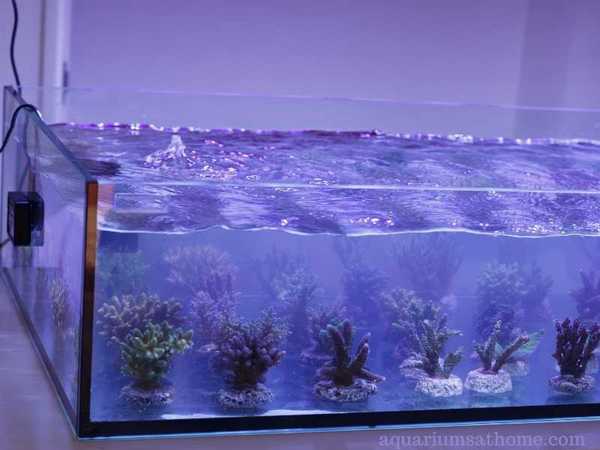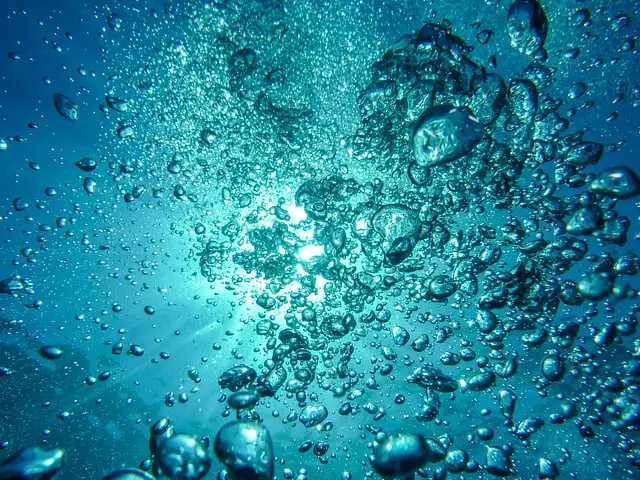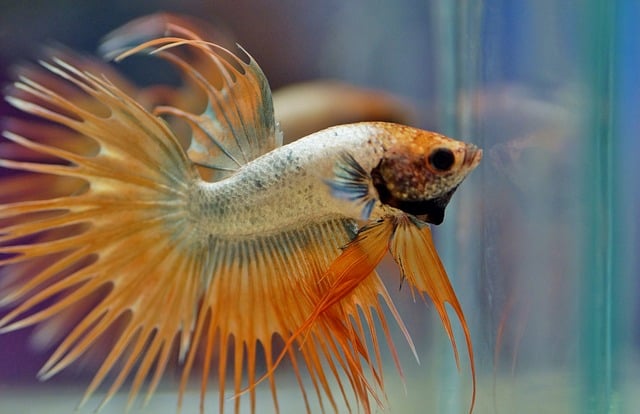A healthy, thriving aquatic environment is directly related to the quality of the water. A crystal-clear reef tank is not only more appealing to the eye but also safer for the creatures inhabiting it. Should you have a cloudy saltwater aquarium, you may be wondering what’s causing it?
A cloudy or unclear marine tank can be the result of 5 things: microbubbles from the protein skimmer, disturbed substrate caused by a high-flow filter, an algae bloom, a bacterial bloom, calcium carbonate precipitation, and/or coral spawning.
Now that you know the 5 reasons why marine tanks often appear cloudy, let’s explore this topic further. Together we’ll examine each potential cause in more detail and devise a plan to remedy the situation. We’ll also learn how long it takes for hazy tank water to clear-up and why a clean aquatic environment is so important to fish.
So, if you’re ready to learn more about murky marine aquarium water and how to fix it, then let’s get to it!
Why is My Salt Tank Cloudy All of a Sudden?
A cloudy or hazy marine tank is typically due to 1 of 5 possibilities:
Microbubbles from a Protein Skimmer
When a protein skimmer is new and being ‘broken in’, it’s common for the device to produce small, gas-filled microbubbles. These bubbles can make the water in an aquarium appear cloudy and unclear. It generally takes a week or two for the problem to fix itself once the equipment becomes established.
Disturbed Substrate Caused by a High-Flow Filter
Intense water movement or high currents caused by a fast-flowing filter in a saltwater tank can disturb the sand or gravel along the bottom. When debris in the substrate is stirred up, it mixes with the water in the aquarium creating a cloudy or milky-looking environment.
Algae Bloom
Algae blooms occur in marine tanks with a build-up of nutrients such as nitrogen and phosphorous. Algae needs both nitrates and phosphates to reproduce. Overfeeding fish results in excessive waste material which then leads to algae overgrowth and hazy, green-hued tank water.
Bacterial Bloom
Milky or cloudy aquarium water is often the result of a bacterial bloom. This typically occurs during the cycling process when the tank is new or after a deep-water change. In most cases, the water will clear-up on its own after a few days once the nitrogen cycle has been completed.
Calcium Carbonate Precipitation
Calcium carbonate precipitation usually forms in reef tanks on pumps and heaters. This is the result of low magnesium levels and makes the aquarium water appear cloudy or unclear. Since marine tanks require a warmer environment, the higher heat is usually what triggers it.
Coral Spawning
Coral spawning typically occurs in a reef tank once a year or when the water is too warm. As living creatures, corals reproduce via sperm and egg. When released into the aquatic environment, the sperm and egg combine creating a white or milky residue in the water.

How do You Clear an Algae Bloom in a Saltwater Tank?
To clear an algae bloom and help prevent any future algae overgrowth in a saltwater tank begin by doing a deep-water change – remove 40-50% of the existing water and replace it with clean, treated water. Then, vacuum the substrate to remove any decaying food as well as any waste material.
Remember not to overfeed fish as this is the leading cause of algae overgrowth. Consider upgrading your aquarium light to a LED version instead of one that uses a fluorescent bulb. LED lights run cooler and you can customize both color and intensity. Reduce the time left on to 6 hours rather than 8.
How do You Clear a Bacterial Bloom in a Saltwater Tank?
To clear a bacterial bloom in a saltwater tank, begin by removing the filter and running it under cool water to wash away any trapped debris. Then, replace the filter and do a 25% water change. Make sure to properly treat the new water with a conditioning agent and add the correct amount of salt.
Next, take a gravel vacuum and clean the substrate of any lingering debris. It usually takes a few days for the bacterial bloom to clear after the cleaning the tank. If it’s been 5 or more days and still no change, then repeat the process outlined above.
How do You Get Rid of Calcium Precipitation in a Marine Tank?
To reduce calcium precipitation in a marine you must lower the pH level to around 8.0 by adding limewater. The initial cloudy appearance that results when limewater mixes with seawater should dissipate naturally on its own.
Then, reduce the alkalinity in the tank to around 8 dKH and lower the calcium level to around 400 ppm. Lower the temperature in the tank as well by a few degrees Fahrenheit and consider upgrading your pump to an energy-efficient model that one that doesn’t get as hot internally.
How do You Prevent Corals from Spawning in a Reef Tank?
To prevent corals from spawning in a reef tank, start by lowering the temperature of the water by a few degrees Fahrenheit. Also, reduce the number of hours you leave the aquarium light on from 12 to 9 and lower the salinity levels from 1.028 to 1.023 as well.
Corals spawning in captivity is rare and sporadic at best. It seems to be more common in new reef tanks and with inexperienced aquarists. it’s important to maintain a clean tank with stable conditions and to test the water parameters regularly to ensure they’re both accurate and safe.

Will a Filter Clear Cloudy Marine Tank Water?
A high-quality filtration system is recommended for any marine tank – not only to keep the water clean and clean but also to help promote the health and longevity of your fish. Gallon for gallon, saltwater tanks require more filtration than their freshwater counterparts.
Canister filters are your best bet along with added equipment including sumps and protein skimmers. Big on power, yet small on energy consumption, canister filters reduce both the time and energy it takes to maintain your saltwater tank while helping to keep the aquatic environment safe for all inhabitants.
Check out this Fluval canister filter available online through Amazon.
How Long does a Saltwater Tank Stay Cloudy?
Depending on the cause, a saltwater tank can appear cloudy for anywhere from a few hours to a few days. If you’ve done a deep-water change, upgraded your filtration system, cleaned the tank thoroughly (scrubbed the walls, vacuumed the substrate, scoured the decorations, etc.) and the water’s still cloudy after 10 days, then it’s time to seek professional advice.
Why is Clear Tank Water so Important to Fish?
A clear tank is the number one sign of a healthy aquatic environment. Fish need clean water, not only to survive but to thrive in captivity. Leftover food, waste material, and decaying plants raise the ammonia, nitrite, and nitrate levels in an aquarium – making the water both cloudy and unsafe.
Final Thoughts
To sum things up, a cloudy or unclear marine tank is caused by one of five culprits: microbubbles from a protein skimmer or air pump, disturbed substrate or debris caused by a high flowing filter, an algae bloom, a bacterial bloom, calcium carbonate precipitation, or coral spawning.
I hope this article has been of help to you in determining why your saltwater aquarium appears cloudy or unclear. Thanks for reading and good luck with your aquarist hobby.
Recommended Posts
Do Saltwater Tanks Need Air Bubbles?
Do Saltwater Tanks Need a Protein Skimmer?
How to Maintain Salinity in a Saltwater Aquarium?






